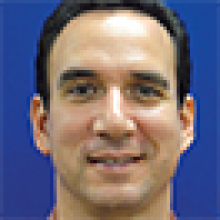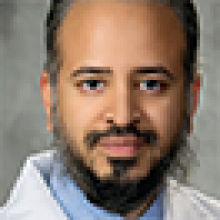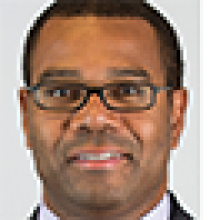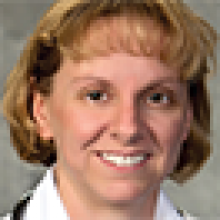User login
PHM15: A Closer Look at Quality Indicators, Evaluation Tools
Session: Let’s Measure Our Own Performance: Propose and Evaluate Pediatric Hospital Medicine Quality Indicators
Summary: During this workshop, a staff of multiple, nationally-recognized quality leaders led a group to review, help develop, and help validate quality measures. The workshop was facilitated via the use of interactive survey tools, didactic sessions, and small groups.
Presenters discussed why quality measures are important and relevant. These included:
- Improved quality of care,
- Demonstration of value,
- Third-party pay for performance indicators,
- Determining our own indicators (versus being chosen for us), and
- Performance incentives.
As part of the introduction to the workshop, the various quality measure validation methods were reviewed. These consisted of methods such as UCLA/RAND and Delphi Panel, as a means to determine validation and feasibility.
Validation was discussed in terms of what is being measured is the true outcome that was hoped to be achieved. The feasibility component used to make sure that the data used for quality measures, or process to be implemented for improvement, can easily be acquired to determine adherence, and that data is free of error. Facilitators reviewed various examples of validity and feasibility of quality measures with direct examples and discussions with attendees.
During the first breakout session, the groups were separated into teams focused on 1. care transitions, 2. safety, and 3. clinical care. The groups were asked to determine three quality indicators per individual, discuss the top five indicators voted on by the group, and than to review and discuss as a group the validity and feasibility of the measures using a scoring tool of 1-3: Not Valid/Feasible, 4-6: Equivocal, 7-9: Valid/Feasible. At the end, a delegated group speaker was asked to discuss either the pros/cons of one of their measures in regards to validity and feasibility to the total audience. Facilitators assisted on clarifying the reasons of why validity and feasibility metrics were appropriate.
During the final parts of workshop, positive and negatives of quality metrics determination methodology were discussed. The attendees reflected on the process of how quality measures are determined along with how these may be used within their settings.
Key Takeaways
Clearly determining the validity and feasibility of quality metrics for pediatrics has become an important topic. It not only has significant ramifications to the value we provide to our patients, but also the financial sustainability of programs and institutions, especially with the current changes in payment models. The workshop gave a clear and concise way of how to come up with quality metrics and the facilitators greatly added to the understanding of how we can “raise the floor” and “raise the ceiling” of pediatric care. TH
Dr. Alvarez is a pediatric hospitalist and medical director of community hospital services at Children’s National Health System in Washington, D.C.
Session: Let’s Measure Our Own Performance: Propose and Evaluate Pediatric Hospital Medicine Quality Indicators
Summary: During this workshop, a staff of multiple, nationally-recognized quality leaders led a group to review, help develop, and help validate quality measures. The workshop was facilitated via the use of interactive survey tools, didactic sessions, and small groups.
Presenters discussed why quality measures are important and relevant. These included:
- Improved quality of care,
- Demonstration of value,
- Third-party pay for performance indicators,
- Determining our own indicators (versus being chosen for us), and
- Performance incentives.
As part of the introduction to the workshop, the various quality measure validation methods were reviewed. These consisted of methods such as UCLA/RAND and Delphi Panel, as a means to determine validation and feasibility.
Validation was discussed in terms of what is being measured is the true outcome that was hoped to be achieved. The feasibility component used to make sure that the data used for quality measures, or process to be implemented for improvement, can easily be acquired to determine adherence, and that data is free of error. Facilitators reviewed various examples of validity and feasibility of quality measures with direct examples and discussions with attendees.
During the first breakout session, the groups were separated into teams focused on 1. care transitions, 2. safety, and 3. clinical care. The groups were asked to determine three quality indicators per individual, discuss the top five indicators voted on by the group, and than to review and discuss as a group the validity and feasibility of the measures using a scoring tool of 1-3: Not Valid/Feasible, 4-6: Equivocal, 7-9: Valid/Feasible. At the end, a delegated group speaker was asked to discuss either the pros/cons of one of their measures in regards to validity and feasibility to the total audience. Facilitators assisted on clarifying the reasons of why validity and feasibility metrics were appropriate.
During the final parts of workshop, positive and negatives of quality metrics determination methodology were discussed. The attendees reflected on the process of how quality measures are determined along with how these may be used within their settings.
Key Takeaways
Clearly determining the validity and feasibility of quality metrics for pediatrics has become an important topic. It not only has significant ramifications to the value we provide to our patients, but also the financial sustainability of programs and institutions, especially with the current changes in payment models. The workshop gave a clear and concise way of how to come up with quality metrics and the facilitators greatly added to the understanding of how we can “raise the floor” and “raise the ceiling” of pediatric care. TH
Dr. Alvarez is a pediatric hospitalist and medical director of community hospital services at Children’s National Health System in Washington, D.C.
Session: Let’s Measure Our Own Performance: Propose and Evaluate Pediatric Hospital Medicine Quality Indicators
Summary: During this workshop, a staff of multiple, nationally-recognized quality leaders led a group to review, help develop, and help validate quality measures. The workshop was facilitated via the use of interactive survey tools, didactic sessions, and small groups.
Presenters discussed why quality measures are important and relevant. These included:
- Improved quality of care,
- Demonstration of value,
- Third-party pay for performance indicators,
- Determining our own indicators (versus being chosen for us), and
- Performance incentives.
As part of the introduction to the workshop, the various quality measure validation methods were reviewed. These consisted of methods such as UCLA/RAND and Delphi Panel, as a means to determine validation and feasibility.
Validation was discussed in terms of what is being measured is the true outcome that was hoped to be achieved. The feasibility component used to make sure that the data used for quality measures, or process to be implemented for improvement, can easily be acquired to determine adherence, and that data is free of error. Facilitators reviewed various examples of validity and feasibility of quality measures with direct examples and discussions with attendees.
During the first breakout session, the groups were separated into teams focused on 1. care transitions, 2. safety, and 3. clinical care. The groups were asked to determine three quality indicators per individual, discuss the top five indicators voted on by the group, and than to review and discuss as a group the validity and feasibility of the measures using a scoring tool of 1-3: Not Valid/Feasible, 4-6: Equivocal, 7-9: Valid/Feasible. At the end, a delegated group speaker was asked to discuss either the pros/cons of one of their measures in regards to validity and feasibility to the total audience. Facilitators assisted on clarifying the reasons of why validity and feasibility metrics were appropriate.
During the final parts of workshop, positive and negatives of quality metrics determination methodology were discussed. The attendees reflected on the process of how quality measures are determined along with how these may be used within their settings.
Key Takeaways
Clearly determining the validity and feasibility of quality metrics for pediatrics has become an important topic. It not only has significant ramifications to the value we provide to our patients, but also the financial sustainability of programs and institutions, especially with the current changes in payment models. The workshop gave a clear and concise way of how to come up with quality metrics and the facilitators greatly added to the understanding of how we can “raise the floor” and “raise the ceiling” of pediatric care. TH
Dr. Alvarez is a pediatric hospitalist and medical director of community hospital services at Children’s National Health System in Washington, D.C.
PHM15: New Quality Measures for Children with Medical Complexity
Pediatric Hospital Medicine 2015's keynote speaker, Rita Mangione-Smith, MD, MPH, reviewed quality measures being developed for medically complex patients by the Center of Excellence on Quality of Care Measures for Children with Complex Needs (COE4CCN). As one of the most challenging groups to not only provide care but to determine if the management provided brings value, the importance of quality measures was emphasized.
Dr. Mangione-Smith, of Seattle Children’s Hospital, reviewed the need for quality measures, as well as the process of developing these measures. Quality measures help to quantify outcomes from care practices, stated Dr. Mangione-Smith, to compare similar settings, and also to set possible benchmarks. The processes range from identifying and prioritizing measures to how they are validated as true value added outcomes. Data sources, sample size, and reliability/validity of the measures are considered important components to ensure that answers or results acquired are applicable and relevant to the population. Another important component is to clearly define a child with medical complexity.
Some reasons why medically complex patients require this focus:
- The low amount of information about their quality of care, investment, and need for coordination;
- Lack of understanding of which care practices make the biggest differences on their outcomes; and
- Their high rate of resource utilization.
The objective was to see which areas of care, such as care coordination, have the highest benefit/improvement on outcomes so as to prioritize resources more effectively. Dr. Mangione-Smith also touched on some obstacles and challenges, such as lack of insurance coverage leading to use of emergency resources as their primary care and its effect on increasing resource utilization.
Measures were determined via a multi-component methodology. Surveys using a binary and linear mean scoring tool were used. This provided multiple types of information such as assessing family’s perception of care, their understanding of medical information and care plans, and their accessibility to medical care services or information about their child.
Currently there is very little evidence on which management methods have the most significant, or any, effect on children with medical complexity. The use of quality measures to help guide which practices may have the highest positive impact on their outcomes greatly adds to the challenging care of this population and can be “used to assess quality of care coordination over time.” TH
Dr. Alvarez is a pediatric hospitalist and medical director of community hospital services at Children’s National Health System in Washington, D.C.
Pediatric Hospital Medicine 2015's keynote speaker, Rita Mangione-Smith, MD, MPH, reviewed quality measures being developed for medically complex patients by the Center of Excellence on Quality of Care Measures for Children with Complex Needs (COE4CCN). As one of the most challenging groups to not only provide care but to determine if the management provided brings value, the importance of quality measures was emphasized.
Dr. Mangione-Smith, of Seattle Children’s Hospital, reviewed the need for quality measures, as well as the process of developing these measures. Quality measures help to quantify outcomes from care practices, stated Dr. Mangione-Smith, to compare similar settings, and also to set possible benchmarks. The processes range from identifying and prioritizing measures to how they are validated as true value added outcomes. Data sources, sample size, and reliability/validity of the measures are considered important components to ensure that answers or results acquired are applicable and relevant to the population. Another important component is to clearly define a child with medical complexity.
Some reasons why medically complex patients require this focus:
- The low amount of information about their quality of care, investment, and need for coordination;
- Lack of understanding of which care practices make the biggest differences on their outcomes; and
- Their high rate of resource utilization.
The objective was to see which areas of care, such as care coordination, have the highest benefit/improvement on outcomes so as to prioritize resources more effectively. Dr. Mangione-Smith also touched on some obstacles and challenges, such as lack of insurance coverage leading to use of emergency resources as their primary care and its effect on increasing resource utilization.
Measures were determined via a multi-component methodology. Surveys using a binary and linear mean scoring tool were used. This provided multiple types of information such as assessing family’s perception of care, their understanding of medical information and care plans, and their accessibility to medical care services or information about their child.
Currently there is very little evidence on which management methods have the most significant, or any, effect on children with medical complexity. The use of quality measures to help guide which practices may have the highest positive impact on their outcomes greatly adds to the challenging care of this population and can be “used to assess quality of care coordination over time.” TH
Dr. Alvarez is a pediatric hospitalist and medical director of community hospital services at Children’s National Health System in Washington, D.C.
Pediatric Hospital Medicine 2015's keynote speaker, Rita Mangione-Smith, MD, MPH, reviewed quality measures being developed for medically complex patients by the Center of Excellence on Quality of Care Measures for Children with Complex Needs (COE4CCN). As one of the most challenging groups to not only provide care but to determine if the management provided brings value, the importance of quality measures was emphasized.
Dr. Mangione-Smith, of Seattle Children’s Hospital, reviewed the need for quality measures, as well as the process of developing these measures. Quality measures help to quantify outcomes from care practices, stated Dr. Mangione-Smith, to compare similar settings, and also to set possible benchmarks. The processes range from identifying and prioritizing measures to how they are validated as true value added outcomes. Data sources, sample size, and reliability/validity of the measures are considered important components to ensure that answers or results acquired are applicable and relevant to the population. Another important component is to clearly define a child with medical complexity.
Some reasons why medically complex patients require this focus:
- The low amount of information about their quality of care, investment, and need for coordination;
- Lack of understanding of which care practices make the biggest differences on their outcomes; and
- Their high rate of resource utilization.
The objective was to see which areas of care, such as care coordination, have the highest benefit/improvement on outcomes so as to prioritize resources more effectively. Dr. Mangione-Smith also touched on some obstacles and challenges, such as lack of insurance coverage leading to use of emergency resources as their primary care and its effect on increasing resource utilization.
Measures were determined via a multi-component methodology. Surveys using a binary and linear mean scoring tool were used. This provided multiple types of information such as assessing family’s perception of care, their understanding of medical information and care plans, and their accessibility to medical care services or information about their child.
Currently there is very little evidence on which management methods have the most significant, or any, effect on children with medical complexity. The use of quality measures to help guide which practices may have the highest positive impact on their outcomes greatly adds to the challenging care of this population and can be “used to assess quality of care coordination over time.” TH
Dr. Alvarez is a pediatric hospitalist and medical director of community hospital services at Children’s National Health System in Washington, D.C.
Movers and Shakers in Hospital Medicine, July 2015









Business Moves










Business Moves










Business Moves

LISTEN NOW: Cheryl DeVita on Evaluating Contracts, Hospitalist Groups
Cheryl DeVita, senior search consultant at Cejka Search, Inc., in St. Louis, Mo., offers advice on evaluating contracts and hospitalist groups.
Cheryl DeVita, senior search consultant at Cejka Search, Inc., in St. Louis, Mo., offers advice on evaluating contracts and hospitalist groups.
Cheryl DeVita, senior search consultant at Cejka Search, Inc., in St. Louis, Mo., offers advice on evaluating contracts and hospitalist groups.
LISTEN NOW: Gregory Seymann, MD, on Choosing Wisely
Gregory Seymann, MD, discusses a Choosing Wisely program.
Gregory Seymann, MD, discusses a Choosing Wisely program.
Gregory Seymann, MD, discusses a Choosing Wisely program.
LISTEN NOW: Yale hospitalists' brush with cancer leads to healthcare cost awareness training program
ROBERT FOGERTY, MD, MPH, a hospitalist and assistant professor of medicine at Yale University, talks about how his own bout with cancer as a college senior heading to medical school helped influence his I-CARE education initiative, which introduces cost awareness into internal medicine residency programs.
ROBERT FOGERTY, MD, MPH, a hospitalist and assistant professor of medicine at Yale University, talks about how his own bout with cancer as a college senior heading to medical school helped influence his I-CARE education initiative, which introduces cost awareness into internal medicine residency programs.
ROBERT FOGERTY, MD, MPH, a hospitalist and assistant professor of medicine at Yale University, talks about how his own bout with cancer as a college senior heading to medical school helped influence his I-CARE education initiative, which introduces cost awareness into internal medicine residency programs.
LISTEN NOW: Vladimir Cadet, MPH, discusses alarm fatigue challenges and solutions
VLADIMIR N. CADET, MPH, associate with the Applied Solutions Group at ECRI Institute in Plymouth Meeting, Pa., discusses why it can be challenging for hospitals to reduce alarm fatigue and provides strategies to address this growing problem.
VLADIMIR N. CADET, MPH, associate with the Applied Solutions Group at ECRI Institute in Plymouth Meeting, Pa., discusses why it can be challenging for hospitals to reduce alarm fatigue and provides strategies to address this growing problem.
VLADIMIR N. CADET, MPH, associate with the Applied Solutions Group at ECRI Institute in Plymouth Meeting, Pa., discusses why it can be challenging for hospitals to reduce alarm fatigue and provides strategies to address this growing problem.
From a Near-Catastrophe, I-CARE
For Robert Fogerty, MD, MPH, it’s more than just a story. It’s a nightmare that he only narrowly avoided.
Now a hospitalist at Yale University School of Medicine in New Haven, Conn., Dr. Fogerty was an economics major in his senior year of college when he was diagnosed with metastatic testicular cancer. Early in the course of his treatment, amid multiple rounds of chemotherapy and before a major surgery, his insurance company informed him that his benefits had been exhausted. Even with family resources, the remaining bills would have been crippling. Luckily, he went to college in Massachusetts, where a state law allowed him to enroll in an individual insurance plan by exempting him from the normal pre-existing condition exclusion. Two years later, he got his life back in order and enrolled in medical school.
“What stuck with me is, yes, I was sick, and yes, I lost all my hair, and yes, I went to my final exams bald with my nausea medicine and my steroids in my pocket and all of those things,” he says. “But after that was all gone, after my hair grew back, and I had my last chemo and my surgery, and I was really starting to get my life back on track, the financial implications of that disease were still there. The financial impact of my illness outlasted the pathological impact of my illness, and the financial burdens could easily have been just as life-altering as a permanent disability.”
Although he was “unbelievably lucky” to escape with manageable medical bills, Dr. Fogerty says, other patients haven’t been as fortunate. That lesson is why he identifies so much with his patients. It’s why he posted his own story to the Costs of Care website, which stresses the importance of cost awareness in healthcare. And it’s why he has committed himself to helping other medical students and residents “remove the blinders” to understand healthcare’s often devastating financial impact.
“When I was going through my residency, I learned a lot about low sodium, and I learned a lot about bloodstream infections and what to do when someone can’t breathe and how to do a skin exam, and all of these things,” Dr. Fogerty says. “But all of these other components that were so devastating to me as a patient weren’t really a main portion of the education that we’re providing tomorrow’s doctors. I thought that was an opportunity to really change things."
By combining his clinical and economics expertise, Dr. Fogerty helped to develop a program called the Interactive Cost-Awareness Resident Exercise, or I-CARE. Launched in 2011, I-CARE seeks to make the abstract problem of healthcare costs—including unnecessary ones—more accessible to trainees. The concept is deceptively simple: Residents compete to see who can reach the correct diagnosis for a given case using the fewest possible resources.
By talking through each case, both trainees and faculty can discuss concepts like waste prevention and financial stewardship in a safe environment. Giving young doctors that “basic set of vocabulary,” Dr. Fogerty says, may help them engage in real decisions later on about a group or health system’s financial pressures and obligations.
The program has since spread to other medical centers, and what began as a cost-awareness exercise has blossomed into a broader discussion about minimizing the cost and burden to patients while maximizing safety and good medicine. TH
For Robert Fogerty, MD, MPH, it’s more than just a story. It’s a nightmare that he only narrowly avoided.
Now a hospitalist at Yale University School of Medicine in New Haven, Conn., Dr. Fogerty was an economics major in his senior year of college when he was diagnosed with metastatic testicular cancer. Early in the course of his treatment, amid multiple rounds of chemotherapy and before a major surgery, his insurance company informed him that his benefits had been exhausted. Even with family resources, the remaining bills would have been crippling. Luckily, he went to college in Massachusetts, where a state law allowed him to enroll in an individual insurance plan by exempting him from the normal pre-existing condition exclusion. Two years later, he got his life back in order and enrolled in medical school.
“What stuck with me is, yes, I was sick, and yes, I lost all my hair, and yes, I went to my final exams bald with my nausea medicine and my steroids in my pocket and all of those things,” he says. “But after that was all gone, after my hair grew back, and I had my last chemo and my surgery, and I was really starting to get my life back on track, the financial implications of that disease were still there. The financial impact of my illness outlasted the pathological impact of my illness, and the financial burdens could easily have been just as life-altering as a permanent disability.”
Although he was “unbelievably lucky” to escape with manageable medical bills, Dr. Fogerty says, other patients haven’t been as fortunate. That lesson is why he identifies so much with his patients. It’s why he posted his own story to the Costs of Care website, which stresses the importance of cost awareness in healthcare. And it’s why he has committed himself to helping other medical students and residents “remove the blinders” to understand healthcare’s often devastating financial impact.
“When I was going through my residency, I learned a lot about low sodium, and I learned a lot about bloodstream infections and what to do when someone can’t breathe and how to do a skin exam, and all of these things,” Dr. Fogerty says. “But all of these other components that were so devastating to me as a patient weren’t really a main portion of the education that we’re providing tomorrow’s doctors. I thought that was an opportunity to really change things."
By combining his clinical and economics expertise, Dr. Fogerty helped to develop a program called the Interactive Cost-Awareness Resident Exercise, or I-CARE. Launched in 2011, I-CARE seeks to make the abstract problem of healthcare costs—including unnecessary ones—more accessible to trainees. The concept is deceptively simple: Residents compete to see who can reach the correct diagnosis for a given case using the fewest possible resources.
By talking through each case, both trainees and faculty can discuss concepts like waste prevention and financial stewardship in a safe environment. Giving young doctors that “basic set of vocabulary,” Dr. Fogerty says, may help them engage in real decisions later on about a group or health system’s financial pressures and obligations.
The program has since spread to other medical centers, and what began as a cost-awareness exercise has blossomed into a broader discussion about minimizing the cost and burden to patients while maximizing safety and good medicine. TH
For Robert Fogerty, MD, MPH, it’s more than just a story. It’s a nightmare that he only narrowly avoided.
Now a hospitalist at Yale University School of Medicine in New Haven, Conn., Dr. Fogerty was an economics major in his senior year of college when he was diagnosed with metastatic testicular cancer. Early in the course of his treatment, amid multiple rounds of chemotherapy and before a major surgery, his insurance company informed him that his benefits had been exhausted. Even with family resources, the remaining bills would have been crippling. Luckily, he went to college in Massachusetts, where a state law allowed him to enroll in an individual insurance plan by exempting him from the normal pre-existing condition exclusion. Two years later, he got his life back in order and enrolled in medical school.
“What stuck with me is, yes, I was sick, and yes, I lost all my hair, and yes, I went to my final exams bald with my nausea medicine and my steroids in my pocket and all of those things,” he says. “But after that was all gone, after my hair grew back, and I had my last chemo and my surgery, and I was really starting to get my life back on track, the financial implications of that disease were still there. The financial impact of my illness outlasted the pathological impact of my illness, and the financial burdens could easily have been just as life-altering as a permanent disability.”
Although he was “unbelievably lucky” to escape with manageable medical bills, Dr. Fogerty says, other patients haven’t been as fortunate. That lesson is why he identifies so much with his patients. It’s why he posted his own story to the Costs of Care website, which stresses the importance of cost awareness in healthcare. And it’s why he has committed himself to helping other medical students and residents “remove the blinders” to understand healthcare’s often devastating financial impact.
“When I was going through my residency, I learned a lot about low sodium, and I learned a lot about bloodstream infections and what to do when someone can’t breathe and how to do a skin exam, and all of these things,” Dr. Fogerty says. “But all of these other components that were so devastating to me as a patient weren’t really a main portion of the education that we’re providing tomorrow’s doctors. I thought that was an opportunity to really change things."
By combining his clinical and economics expertise, Dr. Fogerty helped to develop a program called the Interactive Cost-Awareness Resident Exercise, or I-CARE. Launched in 2011, I-CARE seeks to make the abstract problem of healthcare costs—including unnecessary ones—more accessible to trainees. The concept is deceptively simple: Residents compete to see who can reach the correct diagnosis for a given case using the fewest possible resources.
By talking through each case, both trainees and faculty can discuss concepts like waste prevention and financial stewardship in a safe environment. Giving young doctors that “basic set of vocabulary,” Dr. Fogerty says, may help them engage in real decisions later on about a group or health system’s financial pressures and obligations.
The program has since spread to other medical centers, and what began as a cost-awareness exercise has blossomed into a broader discussion about minimizing the cost and burden to patients while maximizing safety and good medicine. TH
Movers and Shakers in Hospital Medicine, June 2015
Tammy Bugger, hospitalist practice administrator at Alton Memorial Hospital (AMH) in Alton, Ill., was awarded Manager of the Year for Illinois by BJC Medical Group. Bugger is being honored for helping to improve overall patient satisfaction scores for the AMH hospitalist group by ensuring that each patient understands the role of the hospitalist in his or her inpatient care at the hospital.
Rakhi Dimino, MD, has been promoted to one of Greenville, S.C.-based Ob Hospitalist Group’s medical directors of operations as part of its OBHG’s Clinical Leadership Team. Dr. Dimino is currently an OB hospitalist at Houston Methodist Willowbrook Hospital in Houston, Texas.
Roger Lee, MD, has been appointed to the role of chief of staff at UCLA Medical Center in Santa Monica. Dr. Lee is the current co-director of the hospitalist program at UCLA and has served as the chair of UCLA Medical Center’s Medicine Department since 2009. Dr. Lee provides inpatient care at the UCLA Santa Monica campus and at Saint John’s Health Center in Santa Monica.
Jordan Messler, MD, is the new glycemic mentor at the Diabetes Center for Excellence at Heywood Healthcare in North-Central Massachusetts, as part of its partnership with SHM’s Glycemic Control Mentored Implementation Program. Dr. Messler is the current chair of SHM’s Healthcare Quality and Patient Safety Committee. He is based in Clearwater, Fla., where he serves as the medical director of Morton Plant Hospital’s hospitalist program.
Shiraz Nisar, MD, was appointed chairperson of the department of medicine at University Hospitals (UH) Ahuja Medical Center in Cleveland, Ohio. Dr. Nisar is the current clinical site director for Community Hospitalists, a division of the Martin Healthcare Group (MHG) based in Cleveland, at UH Ahuja.
Stephen P. O’Mahony, MD, FACP, has been appointed chief medical information officer for Barnabas Health system based in West Orange, N.J. Most recently, Dr. O’Mahony served as vice president of information technology at Norwalk Hospital in Norwalk, Conn. He is credited with founding one of Connecticut’s first ever hospitalist programs at Norwalk Hospital in 1999.
O’Neil J. Pyke, MD, SFHM, is the new national director of hospital medicine for Keystone Healthcare Management, Inc., based in Memphis, Tenn. Prior to his new role, Dr. Pyke had worked as a hospitalist consultant for Keystone since 2006. Dr. Pyke previously served on SHM’s Ethics and Non-Physician Provider Committees and was a SHM Leadership Academy faculty facilitator.
Jeff Sperring, MD, has been named the new CEO of Seattle Children’s Hospital in Seattle, Wash. Most recently, Dr. Sperring was the CEO of Riley Hospital for Children at Indiana University Health in Indianapolis. Before joining the C-suite, Dr. Sperring served as director of pediatric hospital medicine, chief of staff, and associate chief of staff at Riley Hospital.
Robin Thomas, DO, is the new chairperson of the department of medicine at UH Regional Hospitals, Richmond Campus. Dr. Thomas is a hospitalist for Community Hospitalists, a division of Martin Healthcare Group (MHG) based in Cleveland, Ohio. Dr. Thomas is the current residency director for UH Regional Hospitals.
Jane van Dis, MD, FACOG, was recently promoted to one of the positions of medical directors of operations for Ob Hospitalist Group based in Greenville, S.C. Dr. van Dis is an OB hospitalist at Huntington Memorial Hospital in Pasadena, Calif. Before launching her clinical career six years ago, Dr. van Dis taught at the University of Minnesota Department of OB/GYN as an assistant professor and served as director of the Medical Student OB/GYN Clerkship at the University of Minnesota.
Business Moves
Bates County Memorial Hospital (BCMH) in Butler, Mo., has partnered with Saint Luke’s Health System and Saint Luke’s Physician Specialists to offer hospital medicine services at the facility. The new hospitalist program will staff four hospitalists seven days a week in the hospital from 7 a.m. to 5 p.m. and via telemedicine at night. Saint Luke’s Health System is a regional hospital system that consists of 10 acute care facilities and dozens of outpatient, specialty, and laboratory practices throughout the greater Kansas City area.
Blue Ridge Regional Hospital (BRRH) in Spruce Pine, N.C., recently launched its first hospitalist program. BRRH is a 46-bed, nonprofit, acute care facility serving lower Avery, upper McDowell, Mitchell, and Yancey counties in North Carolina.

IPC Healthcare, Inc. (formerly IPC The Hospitalist Company), based in North Hollywood, Calif., recently acquired Capital Internal Medicine, LLC, based in Silver Spring, Md.; Geriatrics Associates, PC, in Albuquerque, N.M., and GTA Health Solutions in Morristown, Tenn. Capital Internal Medicine is a physician staffing company serving the greater Washington, D.C., metro area. Geriatrics Associates is a long-term and hospice care provider serving greater Albuquerque. GTA Health Solutions is a post-acute behavioral health practice. IPC provides hospitalist and post-acute staffing services in 27 states across the country.
Moses Taylor Hospital, a 217-bed acute care center in Scranton, Penn., recently opened a brand new pediatric wing that will be staffed by a team of pediatric hospitalists from Penn State Hershey Children’s Hospital. The new Pediatric Center of Excellence will provide 18 beds for pediatric care 24 hours a day. Moses Taylor Hospital is part of Commonwealth Health, a regional healthcare network in Northeastern Pennsylvania consisting of six hospitals and dozens of post-acute and laboratory centers throughout the region.

Sound Physicians is now providing hospitalist services to Dignity Health-St. Rose Dominican hospital in Henderson, Nev. St. Rose Dominican is a nonprofit, religiously sponsored hospital part of the Dignity Health network, which operates hospitals, clinics, and care centers in 21 states across the country. Sound Physicians is one of the largest hospitalist providers in the United States, serving hospitals in 35 states across the United States.
Southland MD, a regional hospitalist service provider based in Thomasville, Ga., is now providing hospital medicine at Memorial Hospital and Manor in Bainbridge, Ga. Memorial Hospital and Manor is an 80-bed acute care hospital with an adjacent 107-bed nursing home next door. Southland MD is a regional hospitalist, emergency medicine, and outpatient care provider serving patients throughout South Georgia and North Florida.
–Michael O’Neal
Tammy Bugger, hospitalist practice administrator at Alton Memorial Hospital (AMH) in Alton, Ill., was awarded Manager of the Year for Illinois by BJC Medical Group. Bugger is being honored for helping to improve overall patient satisfaction scores for the AMH hospitalist group by ensuring that each patient understands the role of the hospitalist in his or her inpatient care at the hospital.
Rakhi Dimino, MD, has been promoted to one of Greenville, S.C.-based Ob Hospitalist Group’s medical directors of operations as part of its OBHG’s Clinical Leadership Team. Dr. Dimino is currently an OB hospitalist at Houston Methodist Willowbrook Hospital in Houston, Texas.
Roger Lee, MD, has been appointed to the role of chief of staff at UCLA Medical Center in Santa Monica. Dr. Lee is the current co-director of the hospitalist program at UCLA and has served as the chair of UCLA Medical Center’s Medicine Department since 2009. Dr. Lee provides inpatient care at the UCLA Santa Monica campus and at Saint John’s Health Center in Santa Monica.
Jordan Messler, MD, is the new glycemic mentor at the Diabetes Center for Excellence at Heywood Healthcare in North-Central Massachusetts, as part of its partnership with SHM’s Glycemic Control Mentored Implementation Program. Dr. Messler is the current chair of SHM’s Healthcare Quality and Patient Safety Committee. He is based in Clearwater, Fla., where he serves as the medical director of Morton Plant Hospital’s hospitalist program.
Shiraz Nisar, MD, was appointed chairperson of the department of medicine at University Hospitals (UH) Ahuja Medical Center in Cleveland, Ohio. Dr. Nisar is the current clinical site director for Community Hospitalists, a division of the Martin Healthcare Group (MHG) based in Cleveland, at UH Ahuja.
Stephen P. O’Mahony, MD, FACP, has been appointed chief medical information officer for Barnabas Health system based in West Orange, N.J. Most recently, Dr. O’Mahony served as vice president of information technology at Norwalk Hospital in Norwalk, Conn. He is credited with founding one of Connecticut’s first ever hospitalist programs at Norwalk Hospital in 1999.
O’Neil J. Pyke, MD, SFHM, is the new national director of hospital medicine for Keystone Healthcare Management, Inc., based in Memphis, Tenn. Prior to his new role, Dr. Pyke had worked as a hospitalist consultant for Keystone since 2006. Dr. Pyke previously served on SHM’s Ethics and Non-Physician Provider Committees and was a SHM Leadership Academy faculty facilitator.
Jeff Sperring, MD, has been named the new CEO of Seattle Children’s Hospital in Seattle, Wash. Most recently, Dr. Sperring was the CEO of Riley Hospital for Children at Indiana University Health in Indianapolis. Before joining the C-suite, Dr. Sperring served as director of pediatric hospital medicine, chief of staff, and associate chief of staff at Riley Hospital.
Robin Thomas, DO, is the new chairperson of the department of medicine at UH Regional Hospitals, Richmond Campus. Dr. Thomas is a hospitalist for Community Hospitalists, a division of Martin Healthcare Group (MHG) based in Cleveland, Ohio. Dr. Thomas is the current residency director for UH Regional Hospitals.
Jane van Dis, MD, FACOG, was recently promoted to one of the positions of medical directors of operations for Ob Hospitalist Group based in Greenville, S.C. Dr. van Dis is an OB hospitalist at Huntington Memorial Hospital in Pasadena, Calif. Before launching her clinical career six years ago, Dr. van Dis taught at the University of Minnesota Department of OB/GYN as an assistant professor and served as director of the Medical Student OB/GYN Clerkship at the University of Minnesota.
Business Moves
Bates County Memorial Hospital (BCMH) in Butler, Mo., has partnered with Saint Luke’s Health System and Saint Luke’s Physician Specialists to offer hospital medicine services at the facility. The new hospitalist program will staff four hospitalists seven days a week in the hospital from 7 a.m. to 5 p.m. and via telemedicine at night. Saint Luke’s Health System is a regional hospital system that consists of 10 acute care facilities and dozens of outpatient, specialty, and laboratory practices throughout the greater Kansas City area.
Blue Ridge Regional Hospital (BRRH) in Spruce Pine, N.C., recently launched its first hospitalist program. BRRH is a 46-bed, nonprofit, acute care facility serving lower Avery, upper McDowell, Mitchell, and Yancey counties in North Carolina.

IPC Healthcare, Inc. (formerly IPC The Hospitalist Company), based in North Hollywood, Calif., recently acquired Capital Internal Medicine, LLC, based in Silver Spring, Md.; Geriatrics Associates, PC, in Albuquerque, N.M., and GTA Health Solutions in Morristown, Tenn. Capital Internal Medicine is a physician staffing company serving the greater Washington, D.C., metro area. Geriatrics Associates is a long-term and hospice care provider serving greater Albuquerque. GTA Health Solutions is a post-acute behavioral health practice. IPC provides hospitalist and post-acute staffing services in 27 states across the country.
Moses Taylor Hospital, a 217-bed acute care center in Scranton, Penn., recently opened a brand new pediatric wing that will be staffed by a team of pediatric hospitalists from Penn State Hershey Children’s Hospital. The new Pediatric Center of Excellence will provide 18 beds for pediatric care 24 hours a day. Moses Taylor Hospital is part of Commonwealth Health, a regional healthcare network in Northeastern Pennsylvania consisting of six hospitals and dozens of post-acute and laboratory centers throughout the region.

Sound Physicians is now providing hospitalist services to Dignity Health-St. Rose Dominican hospital in Henderson, Nev. St. Rose Dominican is a nonprofit, religiously sponsored hospital part of the Dignity Health network, which operates hospitals, clinics, and care centers in 21 states across the country. Sound Physicians is one of the largest hospitalist providers in the United States, serving hospitals in 35 states across the United States.
Southland MD, a regional hospitalist service provider based in Thomasville, Ga., is now providing hospital medicine at Memorial Hospital and Manor in Bainbridge, Ga. Memorial Hospital and Manor is an 80-bed acute care hospital with an adjacent 107-bed nursing home next door. Southland MD is a regional hospitalist, emergency medicine, and outpatient care provider serving patients throughout South Georgia and North Florida.
–Michael O’Neal
Tammy Bugger, hospitalist practice administrator at Alton Memorial Hospital (AMH) in Alton, Ill., was awarded Manager of the Year for Illinois by BJC Medical Group. Bugger is being honored for helping to improve overall patient satisfaction scores for the AMH hospitalist group by ensuring that each patient understands the role of the hospitalist in his or her inpatient care at the hospital.
Rakhi Dimino, MD, has been promoted to one of Greenville, S.C.-based Ob Hospitalist Group’s medical directors of operations as part of its OBHG’s Clinical Leadership Team. Dr. Dimino is currently an OB hospitalist at Houston Methodist Willowbrook Hospital in Houston, Texas.
Roger Lee, MD, has been appointed to the role of chief of staff at UCLA Medical Center in Santa Monica. Dr. Lee is the current co-director of the hospitalist program at UCLA and has served as the chair of UCLA Medical Center’s Medicine Department since 2009. Dr. Lee provides inpatient care at the UCLA Santa Monica campus and at Saint John’s Health Center in Santa Monica.
Jordan Messler, MD, is the new glycemic mentor at the Diabetes Center for Excellence at Heywood Healthcare in North-Central Massachusetts, as part of its partnership with SHM’s Glycemic Control Mentored Implementation Program. Dr. Messler is the current chair of SHM’s Healthcare Quality and Patient Safety Committee. He is based in Clearwater, Fla., where he serves as the medical director of Morton Plant Hospital’s hospitalist program.
Shiraz Nisar, MD, was appointed chairperson of the department of medicine at University Hospitals (UH) Ahuja Medical Center in Cleveland, Ohio. Dr. Nisar is the current clinical site director for Community Hospitalists, a division of the Martin Healthcare Group (MHG) based in Cleveland, at UH Ahuja.
Stephen P. O’Mahony, MD, FACP, has been appointed chief medical information officer for Barnabas Health system based in West Orange, N.J. Most recently, Dr. O’Mahony served as vice president of information technology at Norwalk Hospital in Norwalk, Conn. He is credited with founding one of Connecticut’s first ever hospitalist programs at Norwalk Hospital in 1999.
O’Neil J. Pyke, MD, SFHM, is the new national director of hospital medicine for Keystone Healthcare Management, Inc., based in Memphis, Tenn. Prior to his new role, Dr. Pyke had worked as a hospitalist consultant for Keystone since 2006. Dr. Pyke previously served on SHM’s Ethics and Non-Physician Provider Committees and was a SHM Leadership Academy faculty facilitator.
Jeff Sperring, MD, has been named the new CEO of Seattle Children’s Hospital in Seattle, Wash. Most recently, Dr. Sperring was the CEO of Riley Hospital for Children at Indiana University Health in Indianapolis. Before joining the C-suite, Dr. Sperring served as director of pediatric hospital medicine, chief of staff, and associate chief of staff at Riley Hospital.
Robin Thomas, DO, is the new chairperson of the department of medicine at UH Regional Hospitals, Richmond Campus. Dr. Thomas is a hospitalist for Community Hospitalists, a division of Martin Healthcare Group (MHG) based in Cleveland, Ohio. Dr. Thomas is the current residency director for UH Regional Hospitals.
Jane van Dis, MD, FACOG, was recently promoted to one of the positions of medical directors of operations for Ob Hospitalist Group based in Greenville, S.C. Dr. van Dis is an OB hospitalist at Huntington Memorial Hospital in Pasadena, Calif. Before launching her clinical career six years ago, Dr. van Dis taught at the University of Minnesota Department of OB/GYN as an assistant professor and served as director of the Medical Student OB/GYN Clerkship at the University of Minnesota.
Business Moves
Bates County Memorial Hospital (BCMH) in Butler, Mo., has partnered with Saint Luke’s Health System and Saint Luke’s Physician Specialists to offer hospital medicine services at the facility. The new hospitalist program will staff four hospitalists seven days a week in the hospital from 7 a.m. to 5 p.m. and via telemedicine at night. Saint Luke’s Health System is a regional hospital system that consists of 10 acute care facilities and dozens of outpatient, specialty, and laboratory practices throughout the greater Kansas City area.
Blue Ridge Regional Hospital (BRRH) in Spruce Pine, N.C., recently launched its first hospitalist program. BRRH is a 46-bed, nonprofit, acute care facility serving lower Avery, upper McDowell, Mitchell, and Yancey counties in North Carolina.

IPC Healthcare, Inc. (formerly IPC The Hospitalist Company), based in North Hollywood, Calif., recently acquired Capital Internal Medicine, LLC, based in Silver Spring, Md.; Geriatrics Associates, PC, in Albuquerque, N.M., and GTA Health Solutions in Morristown, Tenn. Capital Internal Medicine is a physician staffing company serving the greater Washington, D.C., metro area. Geriatrics Associates is a long-term and hospice care provider serving greater Albuquerque. GTA Health Solutions is a post-acute behavioral health practice. IPC provides hospitalist and post-acute staffing services in 27 states across the country.
Moses Taylor Hospital, a 217-bed acute care center in Scranton, Penn., recently opened a brand new pediatric wing that will be staffed by a team of pediatric hospitalists from Penn State Hershey Children’s Hospital. The new Pediatric Center of Excellence will provide 18 beds for pediatric care 24 hours a day. Moses Taylor Hospital is part of Commonwealth Health, a regional healthcare network in Northeastern Pennsylvania consisting of six hospitals and dozens of post-acute and laboratory centers throughout the region.

Sound Physicians is now providing hospitalist services to Dignity Health-St. Rose Dominican hospital in Henderson, Nev. St. Rose Dominican is a nonprofit, religiously sponsored hospital part of the Dignity Health network, which operates hospitals, clinics, and care centers in 21 states across the country. Sound Physicians is one of the largest hospitalist providers in the United States, serving hospitals in 35 states across the United States.
Southland MD, a regional hospitalist service provider based in Thomasville, Ga., is now providing hospital medicine at Memorial Hospital and Manor in Bainbridge, Ga. Memorial Hospital and Manor is an 80-bed acute care hospital with an adjacent 107-bed nursing home next door. Southland MD is a regional hospitalist, emergency medicine, and outpatient care provider serving patients throughout South Georgia and North Florida.
–Michael O’Neal
To Battle Burnout, Jerome C. Siy, MD, CHIE, SFHM, Instructs Hospitalist Leaders to Engage, Communicate, and Create a “Culture”
Studies show nearly one in three hospitalists will experience long-term exhaustion or diminished interest in their work.1 Burned out physicians have low empathy, don’t communicate well, and provide poor quality of care. Not only does burnout lower quality of care, it is also costly and affects physicians’ personal lives. Unfortunately, despite more than a decade of research and effort to improve burnout, there seems to be no secret formula.
“We see burnout in our quality metrics. We see it in increased medical errors. Patient compliance can be tied to burnout and poor patient satisfaction, as well,” said Jerome C. Siy, MD, CHIE, SFHM, during his HM15 session last month at the Gaylord National Resort and Conference Center in National Harbor, Md. “What is really important to understand is that burnout results in high turnover and early retirement. Conservative estimates tell us a burned out physician can cost the hospital system $250,000.”
Dr. Siy’s talk, “Preventing Hospitalist Burnout through Engagement,” went beyond the basics of burnout (higher rates of substance abuse, depression, suicidal ideation, and family conflicts) and explored the systematic reasons for its occurrence in hospital medicine. The 2009 winner of SHM’s Award for Clinical Excellence also outlined a handful of ways HM groups can engage and combat burnout.
“What is interesting is that the rate that our profession has burnout is inversely proportional to the rate of the U.S. general population,” said Dr. Siy, assistant professor of medicine at the University of Minnesota Medical School and department head of hospital medicine at HealthPartners Medical Group in Minneapolis. “In the general U.S. population, the higher your level of education, the lower the rates of burnout. And yet we, physicians, have a remarkably high rate of burnout compared with those at our education level.
“And when they broke it out by specialty, it was front-line physicians that have the highest rates of burnout.”
Dr. Siy says burnout is partly the fault of the “system,” in terms of workload and performance pressures. His hospitalist group has implemented mindfulness training with a guru and empathy training with age simulators. They employ geographic-based teams and bedside rounds with nursing. They’ve even hired scribes on the observation unit.
“Not only are we trying to address burnout from the individual physician perspective, but we’re trying to address the causes of burnout,” he says.
Dr. Siy also showed attendees a video on engagement by best-selling author Daniel Pink. The three factors Pink believes lead to better performance and personal satisfaction are autonomy, mastery, purpose. And Pink encourages business leaders to “take compensation off the table.”
“He talks about how compensation is important and drives things, but actually, if you are fair with your compensation, it no longer incents your workforce,” Dr. Siy reiterates. “So if compensation is a big issue for you, you should know that.”
Most important, he says, “It’s about creating a culture.” He provided this list of ways to engage hospitalists:
- Add a measure of physician engagement to your scorecard;
- Translate engagement data by having presence in the workspace, even when off service;
- Employ individualized and group time to provide feedback and mentoring, develop relationships, learn new skills, and grow;
- Have physicians lead and partner in quality improvement efforts;
- Have regular, formal meetings with opportunities for open discussion;
- Incorporate professional development into your culture;
- Develop a common sense of purpose inside and outside of the hospital; and
- Structure compensation to reflect your values.
“Everyone in your group has to have an opportunity to grow,” he says. “They need to know that you, the group leaders … and the system care about them.” TH
Reference
1. Hinami K, Whelan CT, Miller JA, Wolosin RJ, Wetterneck TB, Society of Hospital Medicine Career Satisfaction Task Force. Job characteristics, satisfaction, and burnout across hospitalist practice models. J Hosp Med. 2012;7(5):402-410.
Studies show nearly one in three hospitalists will experience long-term exhaustion or diminished interest in their work.1 Burned out physicians have low empathy, don’t communicate well, and provide poor quality of care. Not only does burnout lower quality of care, it is also costly and affects physicians’ personal lives. Unfortunately, despite more than a decade of research and effort to improve burnout, there seems to be no secret formula.
“We see burnout in our quality metrics. We see it in increased medical errors. Patient compliance can be tied to burnout and poor patient satisfaction, as well,” said Jerome C. Siy, MD, CHIE, SFHM, during his HM15 session last month at the Gaylord National Resort and Conference Center in National Harbor, Md. “What is really important to understand is that burnout results in high turnover and early retirement. Conservative estimates tell us a burned out physician can cost the hospital system $250,000.”
Dr. Siy’s talk, “Preventing Hospitalist Burnout through Engagement,” went beyond the basics of burnout (higher rates of substance abuse, depression, suicidal ideation, and family conflicts) and explored the systematic reasons for its occurrence in hospital medicine. The 2009 winner of SHM’s Award for Clinical Excellence also outlined a handful of ways HM groups can engage and combat burnout.
“What is interesting is that the rate that our profession has burnout is inversely proportional to the rate of the U.S. general population,” said Dr. Siy, assistant professor of medicine at the University of Minnesota Medical School and department head of hospital medicine at HealthPartners Medical Group in Minneapolis. “In the general U.S. population, the higher your level of education, the lower the rates of burnout. And yet we, physicians, have a remarkably high rate of burnout compared with those at our education level.
“And when they broke it out by specialty, it was front-line physicians that have the highest rates of burnout.”
Dr. Siy says burnout is partly the fault of the “system,” in terms of workload and performance pressures. His hospitalist group has implemented mindfulness training with a guru and empathy training with age simulators. They employ geographic-based teams and bedside rounds with nursing. They’ve even hired scribes on the observation unit.
“Not only are we trying to address burnout from the individual physician perspective, but we’re trying to address the causes of burnout,” he says.
Dr. Siy also showed attendees a video on engagement by best-selling author Daniel Pink. The three factors Pink believes lead to better performance and personal satisfaction are autonomy, mastery, purpose. And Pink encourages business leaders to “take compensation off the table.”
“He talks about how compensation is important and drives things, but actually, if you are fair with your compensation, it no longer incents your workforce,” Dr. Siy reiterates. “So if compensation is a big issue for you, you should know that.”
Most important, he says, “It’s about creating a culture.” He provided this list of ways to engage hospitalists:
- Add a measure of physician engagement to your scorecard;
- Translate engagement data by having presence in the workspace, even when off service;
- Employ individualized and group time to provide feedback and mentoring, develop relationships, learn new skills, and grow;
- Have physicians lead and partner in quality improvement efforts;
- Have regular, formal meetings with opportunities for open discussion;
- Incorporate professional development into your culture;
- Develop a common sense of purpose inside and outside of the hospital; and
- Structure compensation to reflect your values.
“Everyone in your group has to have an opportunity to grow,” he says. “They need to know that you, the group leaders … and the system care about them.” TH
Reference
1. Hinami K, Whelan CT, Miller JA, Wolosin RJ, Wetterneck TB, Society of Hospital Medicine Career Satisfaction Task Force. Job characteristics, satisfaction, and burnout across hospitalist practice models. J Hosp Med. 2012;7(5):402-410.
Studies show nearly one in three hospitalists will experience long-term exhaustion or diminished interest in their work.1 Burned out physicians have low empathy, don’t communicate well, and provide poor quality of care. Not only does burnout lower quality of care, it is also costly and affects physicians’ personal lives. Unfortunately, despite more than a decade of research and effort to improve burnout, there seems to be no secret formula.
“We see burnout in our quality metrics. We see it in increased medical errors. Patient compliance can be tied to burnout and poor patient satisfaction, as well,” said Jerome C. Siy, MD, CHIE, SFHM, during his HM15 session last month at the Gaylord National Resort and Conference Center in National Harbor, Md. “What is really important to understand is that burnout results in high turnover and early retirement. Conservative estimates tell us a burned out physician can cost the hospital system $250,000.”
Dr. Siy’s talk, “Preventing Hospitalist Burnout through Engagement,” went beyond the basics of burnout (higher rates of substance abuse, depression, suicidal ideation, and family conflicts) and explored the systematic reasons for its occurrence in hospital medicine. The 2009 winner of SHM’s Award for Clinical Excellence also outlined a handful of ways HM groups can engage and combat burnout.
“What is interesting is that the rate that our profession has burnout is inversely proportional to the rate of the U.S. general population,” said Dr. Siy, assistant professor of medicine at the University of Minnesota Medical School and department head of hospital medicine at HealthPartners Medical Group in Minneapolis. “In the general U.S. population, the higher your level of education, the lower the rates of burnout. And yet we, physicians, have a remarkably high rate of burnout compared with those at our education level.
“And when they broke it out by specialty, it was front-line physicians that have the highest rates of burnout.”
Dr. Siy says burnout is partly the fault of the “system,” in terms of workload and performance pressures. His hospitalist group has implemented mindfulness training with a guru and empathy training with age simulators. They employ geographic-based teams and bedside rounds with nursing. They’ve even hired scribes on the observation unit.
“Not only are we trying to address burnout from the individual physician perspective, but we’re trying to address the causes of burnout,” he says.
Dr. Siy also showed attendees a video on engagement by best-selling author Daniel Pink. The three factors Pink believes lead to better performance and personal satisfaction are autonomy, mastery, purpose. And Pink encourages business leaders to “take compensation off the table.”
“He talks about how compensation is important and drives things, but actually, if you are fair with your compensation, it no longer incents your workforce,” Dr. Siy reiterates. “So if compensation is a big issue for you, you should know that.”
Most important, he says, “It’s about creating a culture.” He provided this list of ways to engage hospitalists:
- Add a measure of physician engagement to your scorecard;
- Translate engagement data by having presence in the workspace, even when off service;
- Employ individualized and group time to provide feedback and mentoring, develop relationships, learn new skills, and grow;
- Have physicians lead and partner in quality improvement efforts;
- Have regular, formal meetings with opportunities for open discussion;
- Incorporate professional development into your culture;
- Develop a common sense of purpose inside and outside of the hospital; and
- Structure compensation to reflect your values.
“Everyone in your group has to have an opportunity to grow,” he says. “They need to know that you, the group leaders … and the system care about them.” TH
Reference
1. Hinami K, Whelan CT, Miller JA, Wolosin RJ, Wetterneck TB, Society of Hospital Medicine Career Satisfaction Task Force. Job characteristics, satisfaction, and burnout across hospitalist practice models. J Hosp Med. 2012;7(5):402-410.












